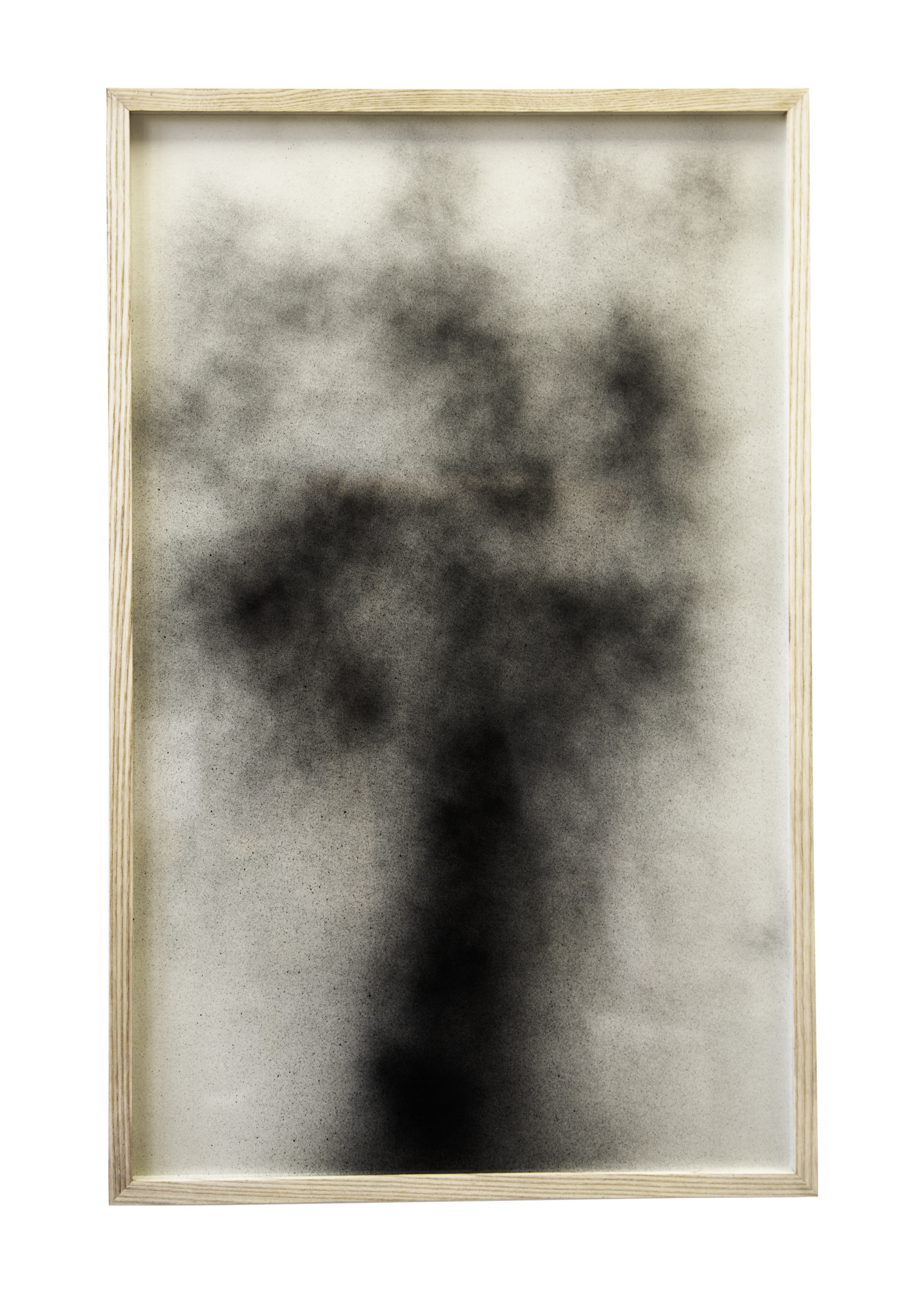Acrylic Medium, Photographic Ash, Glass
2019 - 2021


Acrylic Medium and Photographic Ash on Canvas, 150 x 90cm, Unique (2020)

Carbon Copy (894 photographs of The British Seaside & Countryside)
Acrylic Medium and Photographic Ash on Canvas, 50 x 50cm, Unique (2019)

Carbon Copy (1053 Photographs of the Japanese Countryside)
Acrylic Medium and Photographic Ash on Canvas, 61 x 50.8cm, Unique (2021)
![]()
Carbon Copy (949 Photographs of British Livestock)
Acrylic Medium and Photographic Ash on Canvas, 50 x 50cm, Unique (2021)
![]()
Carbon Copy (1387 Photographs of Japanese Children)
Acrylic Medium and Photographic Ash on Canvas, 76.2 x 50.8cm, Unique (2021)
![]()
Carbon Copy (709 Photographs of Japanese Towns)
Acrylic Medium and Photographic Ash on Canvas, 50 x 50cm, Unique (2021)
![]()
Carbon Copy (A Single Photograph of a Man Standing by a Pond)
Acrylic Medium and Photographic Ash on Glass, 62.8cm x 40cm (2021)
![]()
Carbon Copy (A Single Photograph of a Car in the Distance)
Acrylic Medium and Photographic Ash on Glass, 62.8cm x 40cm (2021)
![]()
Carbon Copy (A Single Photograph of a Fallen Tree)
Acrylic Medium and Photographic Ash on Glass, 62.8cm x 40cm (2021)
![]()
Carbon Copy (A Single Photograph of a Countryside Road)
Acrylic Medium and Photographic Ash on Glass, 62.8cm x 40cm (2021)
Acrylic Medium and Photographic Ash on Canvas, 61 x 50.8cm, Unique (2021)

Carbon Copy (949 Photographs of British Livestock)
Acrylic Medium and Photographic Ash on Canvas, 50 x 50cm, Unique (2021)

Carbon Copy (1387 Photographs of Japanese Children)
Acrylic Medium and Photographic Ash on Canvas, 76.2 x 50.8cm, Unique (2021)

Carbon Copy (709 Photographs of Japanese Towns)
Acrylic Medium and Photographic Ash on Canvas, 50 x 50cm, Unique (2021)

Carbon Copy (A Single Photograph of a Man Standing by a Pond)
Acrylic Medium and Photographic Ash on Glass, 62.8cm x 40cm (2021)

Carbon Copy (A Single Photograph of a Car in the Distance)
Acrylic Medium and Photographic Ash on Glass, 62.8cm x 40cm (2021)

Carbon Copy (A Single Photograph of a Fallen Tree)
Acrylic Medium and Photographic Ash on Glass, 62.8cm x 40cm (2021)

Carbon Copy (A Single Photograph of a Countryside Road)
Acrylic Medium and Photographic Ash on Glass, 62.8cm x 40cm (2021)
‘Carbon Copy’ acts as a process of distillation, of boiling something down to its essence, using something at its most bare, in its most primal and primitive state - the photograph as pigment, not as representation. No longer fixed in time, the photographs are burned, turned to ash and then brushed and affixed onto canvas or glass. They become stripped of their agency as imagery and simply exist as matter, as material. Deprived of the hierarchical nature of representation, they inhabit the ambivalent realm between being and non-being. They are the photograph, without the photograph.
In an increasingly image-obsessed world, there is a certain importance in the re-utlilisation and recontextualisation of physical imagery, claiming authorship over what has already been created and creating something new from its ashes. There is creation within the destruction of something - the giving of new life, that would otherwise cease to exist or simply just stagnate. This archive of images breathes and lives again through their demise in a wonderfully violent and sacrilegious way. Through fire, the photographs lose their agency not only as images, but as objects. The fire reverts them to nothing but chemicals and paper and thereby ignites a shift from an important memory in time, an heirloom, a small piece of nostalgia, to simple matter. In a world where server farms are being built simply to store the photos from our phones, ‘Carbon Copy’ considers the destruction of the photograph, rather than its creation.
“Images of red and orange skies hold great photographic power”, but so do images of rebirth, of something new rising from the ashes. ‘Carbon Copy’ is initially about fire and destruction - using fire to create a work that becomes a device to enter an imagined post-anthropocene landscape, one which was mined, burned, carbonised, destroyed and made uninhabitable by human greed. The work acts as a miniature of sorts. Fire is not inherently good or bad, it is a cultural symbol and it has enabled civilisation to thrive just as much as it has put it on the brink of destruction. Yet ‘Carbon Copy’ also becomes a way to generate a representation of a more fertile way of thinking in terms of image creation. It posits the idea that fire can be used as a means of regeneration. We have seen a massive increase in destructive global fires, that nonetheless create fresh, fertile ground upon which we can make progress.
Rather than setting more fires, these wildfires have set a task for us to recreate, and we should do just that. This is the heart of what ‘Carbon Copy’ is about, and the questions that it is attempting to pose through the thousands of images and lived memories that it destroys in its path to becoming a collection of new individual works.